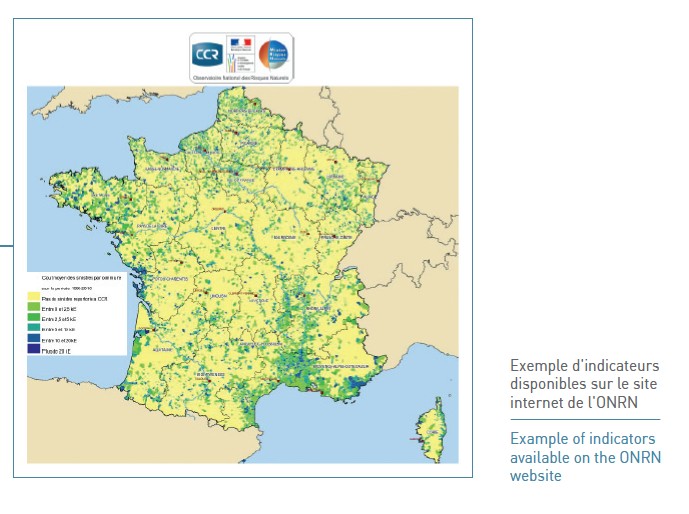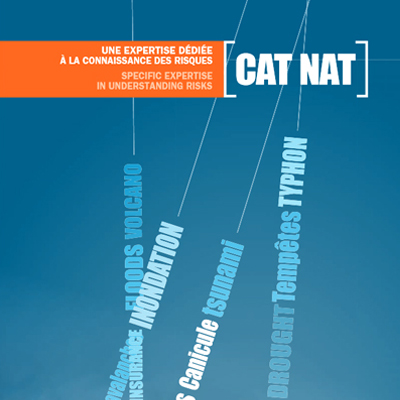Plaquette expertise Cat Nat - CCR
PUBLICATIONS
Expert knowledge of risks
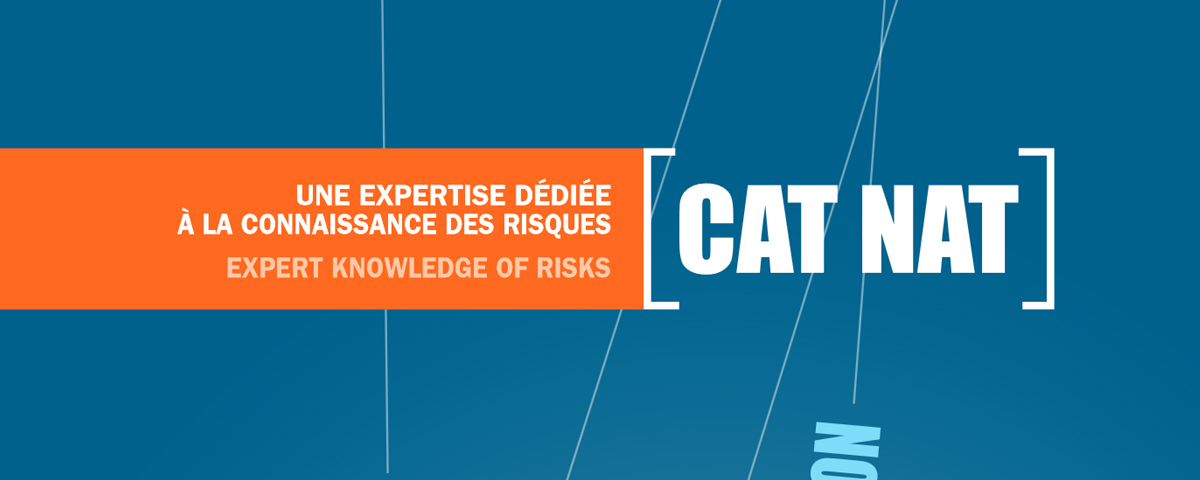
Expertise that contributes to risk knowledge and prevention
06/28/2016
CCR is a reinsurance company tasked with designing, implementing and managing efficient instruments providing reinsurance coverage of catastrophe perils to meet the needs of its clients as well as to serve the general interest.
Since the introduction of the French compensation scheme for natural disasters in 1982, CCR is accredited to provide, upon the request of the insurer, State-guaranteed unlimited reinsurance coverage against natural disasters arising in France.
Expertise that contributes to risk knowledge and prevention
Over the years, CCR has developed its expertise by improving its knowledge of natural hazards and of the vulnerability of areas exposed to these hazards through the analysis of the data collected. The company contributes to the assessment of the financial consequences of natural disasters by developing its own in-house models used in conjunction with those developed by other international providers.
These efforts enable the company to effectively maintain the financial balance of the natural disasters compensation scheme to the benefit of everyone. CCR's models also enable the company to assess the consequences of natural disasters once they have occurred and to estimate the level of exposure of the territories potentially affected by such events prior to their occurrence. By disseminating and sharing pertinent information via its websites and by participating in the work of the National Observatory for Natural Hazards (Observatoire National des Risques Naturels - ONRN), CCR actively contributes to risk prevention.
Gathering data
In the Framework of its role as secretary to the French Interministerial Commission on Natural Disasters, CCR maintains a database on prior decrees recognizing a state of natural disaster in France and dating back to 1982.
The database also provides information on the availability of Risk Prevention Plans (Plans de Prévention des Risques - PPR) for French municipalities thereby establishing a link between insurance and prevention.
As the administrator of a number of Public Funds, including the Major Natural Risk Prevention Fund (Fonds de Prévention des Risques Naturels Majeurs - FPRNM), CCR also holds data on the financing of preventive measures, of coverage or of the cost of expropriation by the State, in the framework of its operations aimed at reducing the vulnerability of certain highly exposed territories.
Furthermore, for over 15 years, CCR has collected data from the insurance companies it reinsures through bilateral agreements. These data help improve a deeper understanding of the exposure to natural disasters of the French territories. Data is collected on:
- the risks insured: location and insured value,
- the losses incurred.
Depending on the year, the data represent up to 90% of the market share for risks and 63% for losses. The data are continually upgraded enabling CCR to develop its knowledge base and its expertise in the field of natural disasters in France. Risk exposure indicators are established and made available to the public authorities by way of bilateral agreements. The indicators help provide a means of prioritizing preventive measures for specific territories and also of assessing the effectiveness of such measures.
The data collected by CCR are also used to develop its in-house models designed to assess loss related to natural hazards.
Modeling risks
CCR has implemented models to qualify and quantify the exposure of French municipalities to natural risks in order to meet the needs of the company, its insurer-clients, the public authorities and other risk prevention stakeholders.
In particular, the models make it possible to:
- estimate the cost of an event for CCR, the market or the insurers in the days following occurrence,
- measure the State's, CCR's and its client's financial exposure to a large number of susceptible events, prior to occurrence,
- analyze the exposure of the territories to natural risks.
CCR develops modeling techniques relevant to the four principal perils covered under the natural disaster scheme: floods (run-off, overflow and coastal flooding), subsidence (swelling or shrinking of clay soils), earthquakes and cyclonic winds.
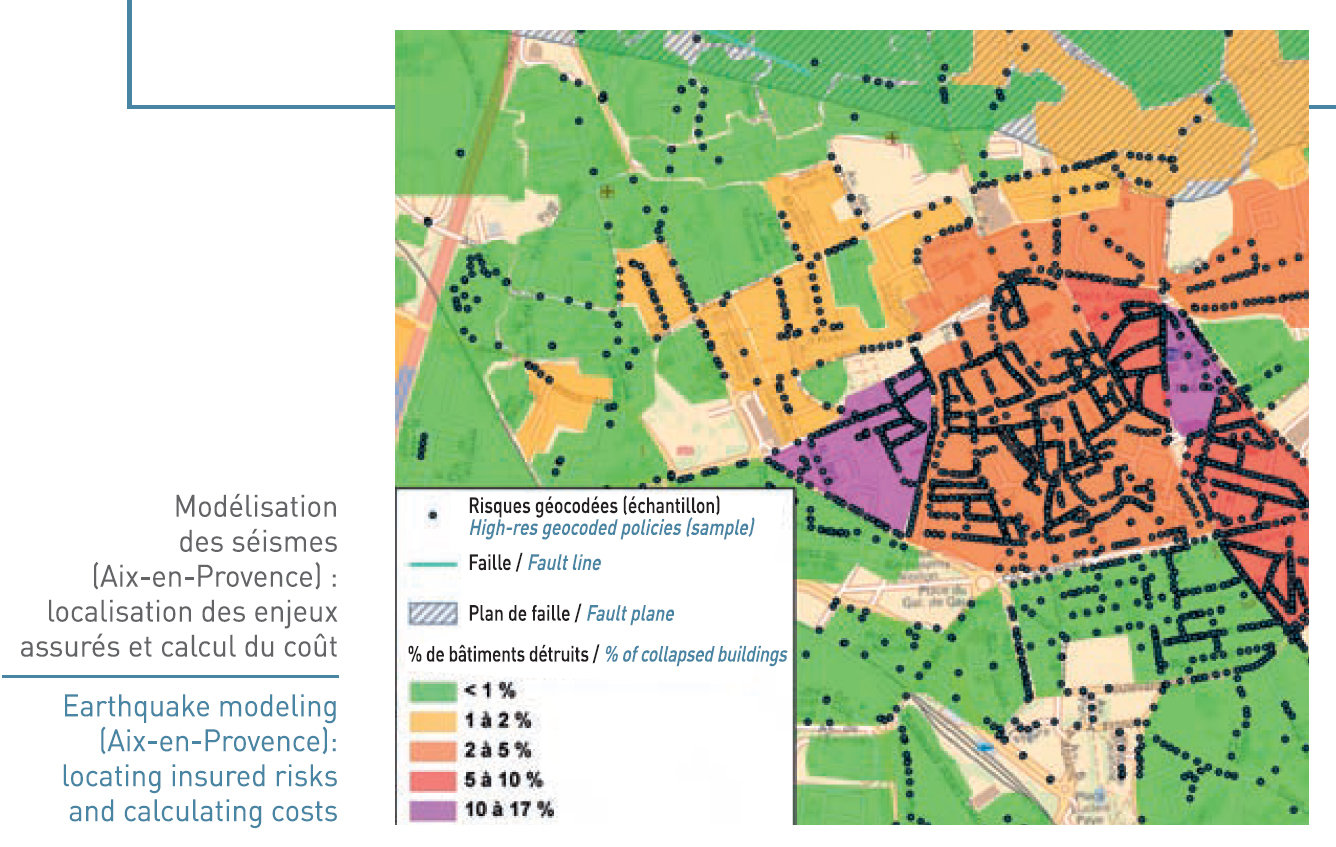
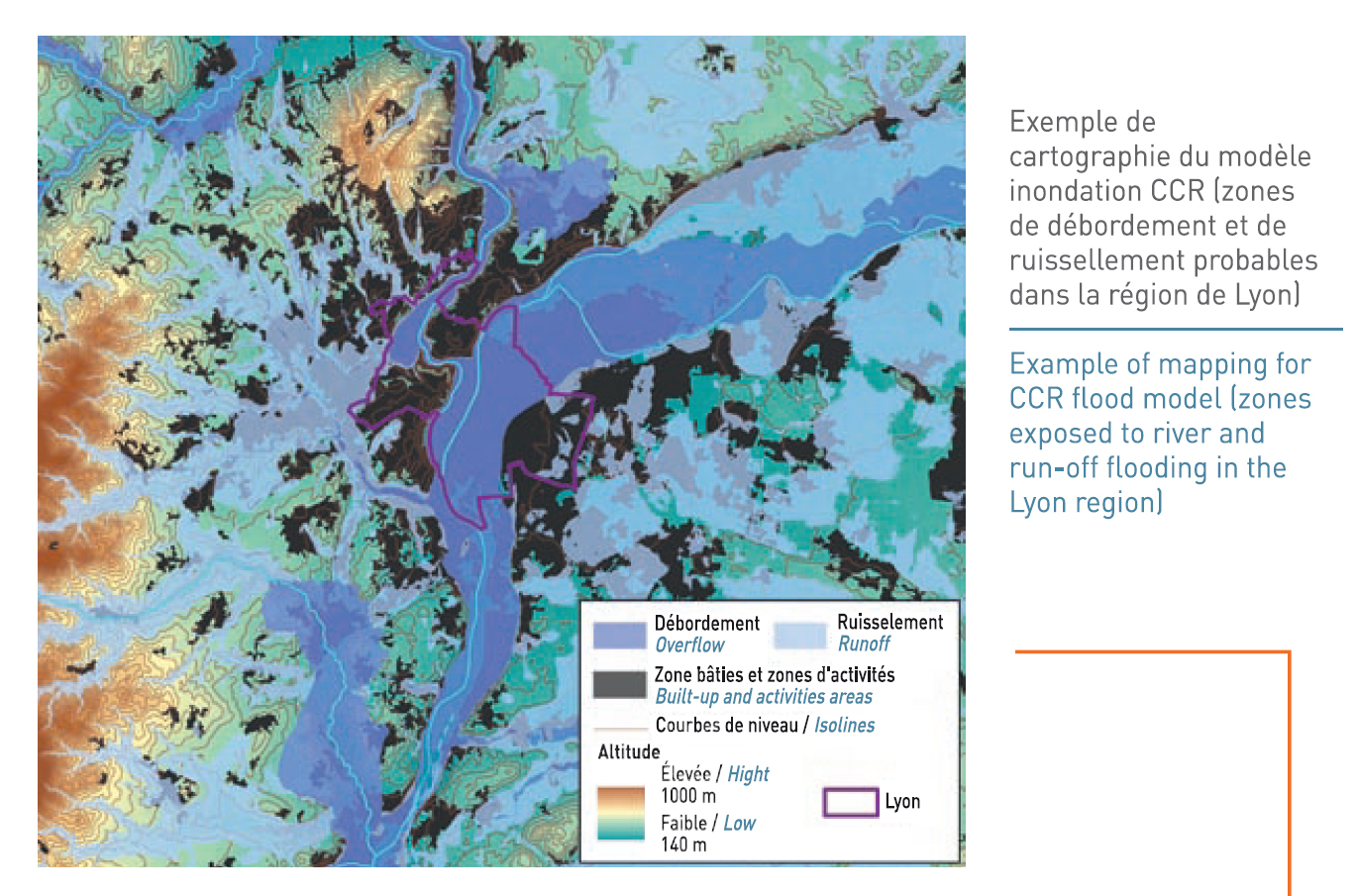
In the framework of its risk modeling program, CCR has established partnerships with a number of leading scientific agencies:
- Météo France for the modeling of floods, drought, cyclones and for the consideration of climate change,
- BRGM for the modeling of subsidence, earthquakes and coastal flooding,
- IRSTEA for the modeling of floods,
- SERTIT, (Strasbourg University) to obtain a map, from satellite data, of the zones impacted by an event shortly after its occurrence,
- ISFA for the modeling of economic costs.
CCR also works in partnership with companies specialized in the field of natural risks such as PREDICT and JBA Risk Management.
The company regularly participates in research initiatives relating to perils it has not yet modeled. For instance, CCR was a participant in the ANR CASAVA project sponsored by (IPGP) that evaluated volcanic risks in the French West Indies as well as in the European STAR FLOOD project on natural disaster coverage systems and prevention. Today, CCR is contributing to the development of the Risc-kit project aimed at mitigating the risk exposure of the coastal regions as well as to the co-supervision of PhD in cooperation with ISFA and IFSTTAR. Working in association with research institutes and agencies, CCR has included doctoral and post-doctoral researchers in its R&D - Modeling team.
The data it has collected and the tools it has developed meet the company's internal needs and enable it to provide services to the French State as well as to its cedants. They also contribute to the prevention of natural disasters, notably within the framework of relations with the French Ministry of the Environment for use by the EU Floods Directive's Preliminary Flood Risk Assessment, and the National Strategy of Ecological Transition towards Sustainable Development (Stratégie nationale de transition écologique vers un développement durable - SNTEDD).
The modeling infrastructure implemented by CCR also enables it to quickly analyze emerging risks, such as the risk of crop damage due to adverse weather conditions. Such risks are not covered under the natural disaster scheme as is the case for the potential impact of climate change on insured damages arising from natural disasters.
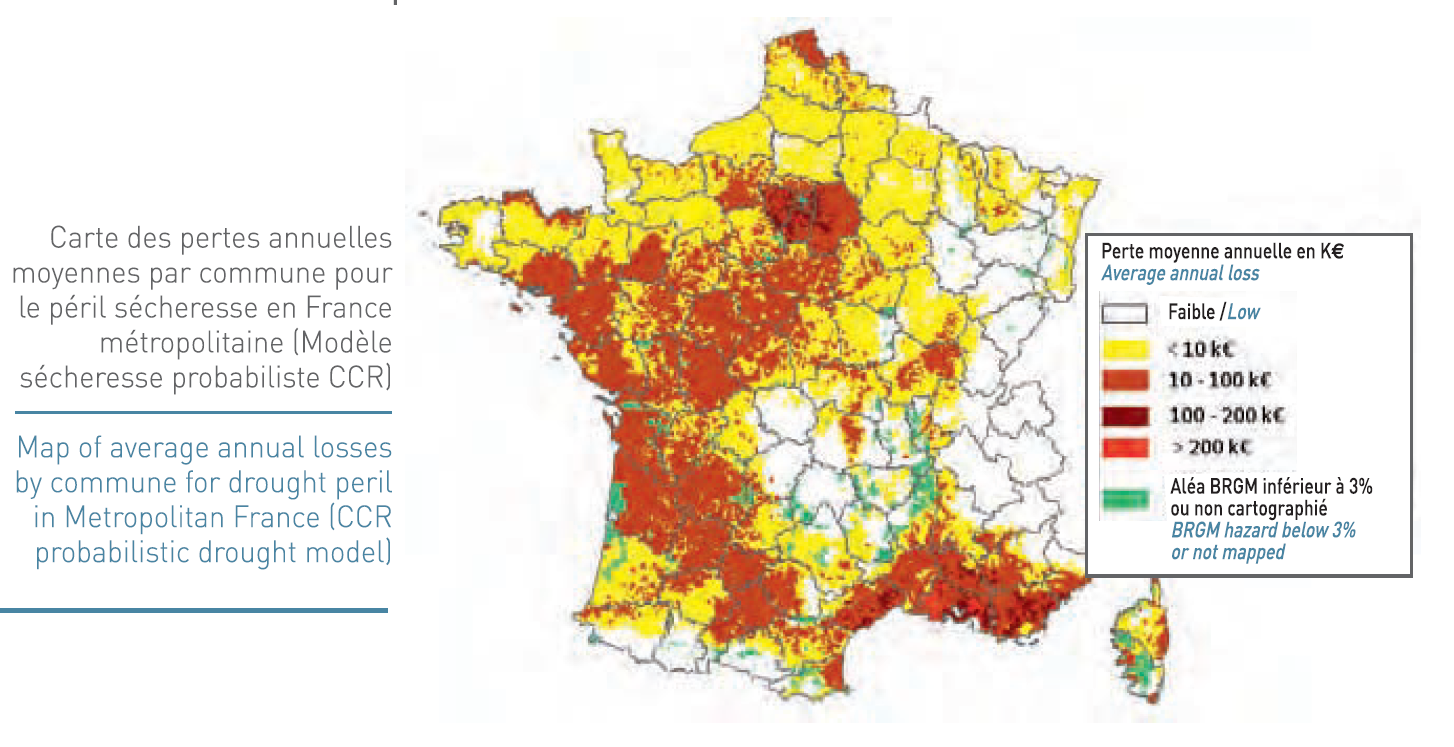
Providing information
CCR strives to provide a portion of its knowledge to its clients, public authorities and general public.
To this extent, two Internet portals have been implemented. The aim of these tools is to further the knowledge of natural disasters over the long term and also to provide the elements necessary to analyze territories exposure to natural disaster risks.
The E-risk website provides the general public with information on natural disasters arising in France. With E-risk, it is possible to consult:
- information on the natural disaster scheme,
- explanations of the natural perils covered by the scheme,
- historical information on events that have impacted French territories between 1989 and 2013 (description, recognition of a state of natural disaster, cost of an event),
- a municipality data sheet indicative of the Risk Prevention Plans and the decree recognizing a state of natural disaster for each municipality.
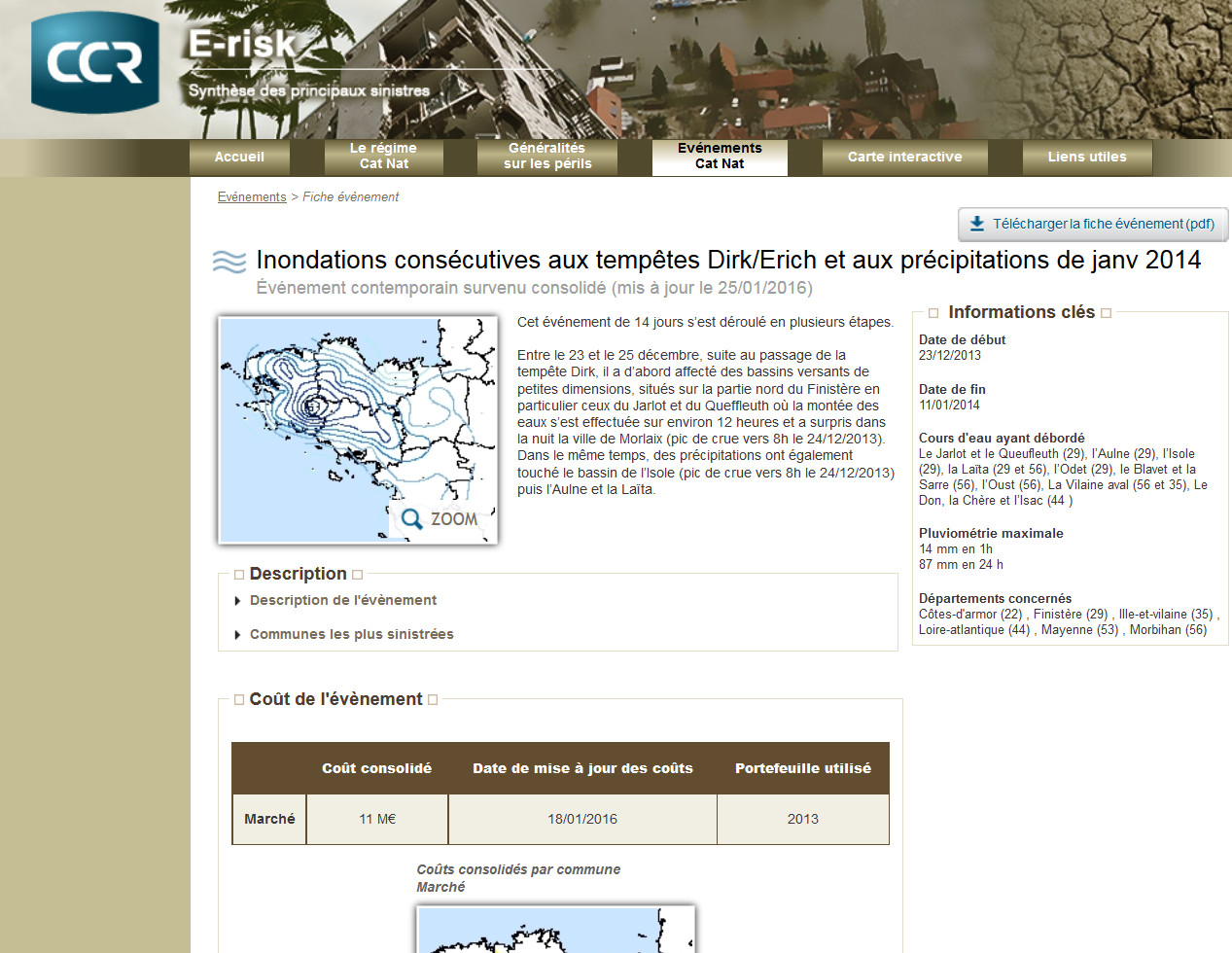
An interactive map enables access to insurance-related information by French department (average and total cost of losses, average frequency of losses, ...) and by municipality (number of natural disaster decrees).
E-risk may be accessed from the CCR website www.ccr.fr
Ceres portal is available for access by CCR clients and the French public authorities (Ministry of Finance, Ministry of the Interior and Ministry of the Environment). It enables users to analyze exposure to natural disasters.
Information may be consulted on recent events (within the current year), prior-year events or potential extreme scenario not yet occurred. Approximately one week following the occurrence of an event, users may access an assessment of the impacted zone by the event using CCR models as well as an estimate of the cost to the insurance market. An interactive map offers access to more detailed information at the municipality and
infra-municipality levels.
Cedants providing data that meet the required quality criteria may benefit from tailor-made estimates and analyses of their portfolio.
Ceres is consistently upgraded, providing additional information and integrated features based on the needs expressed by its users in the context of a Users Club that meets twice a year.
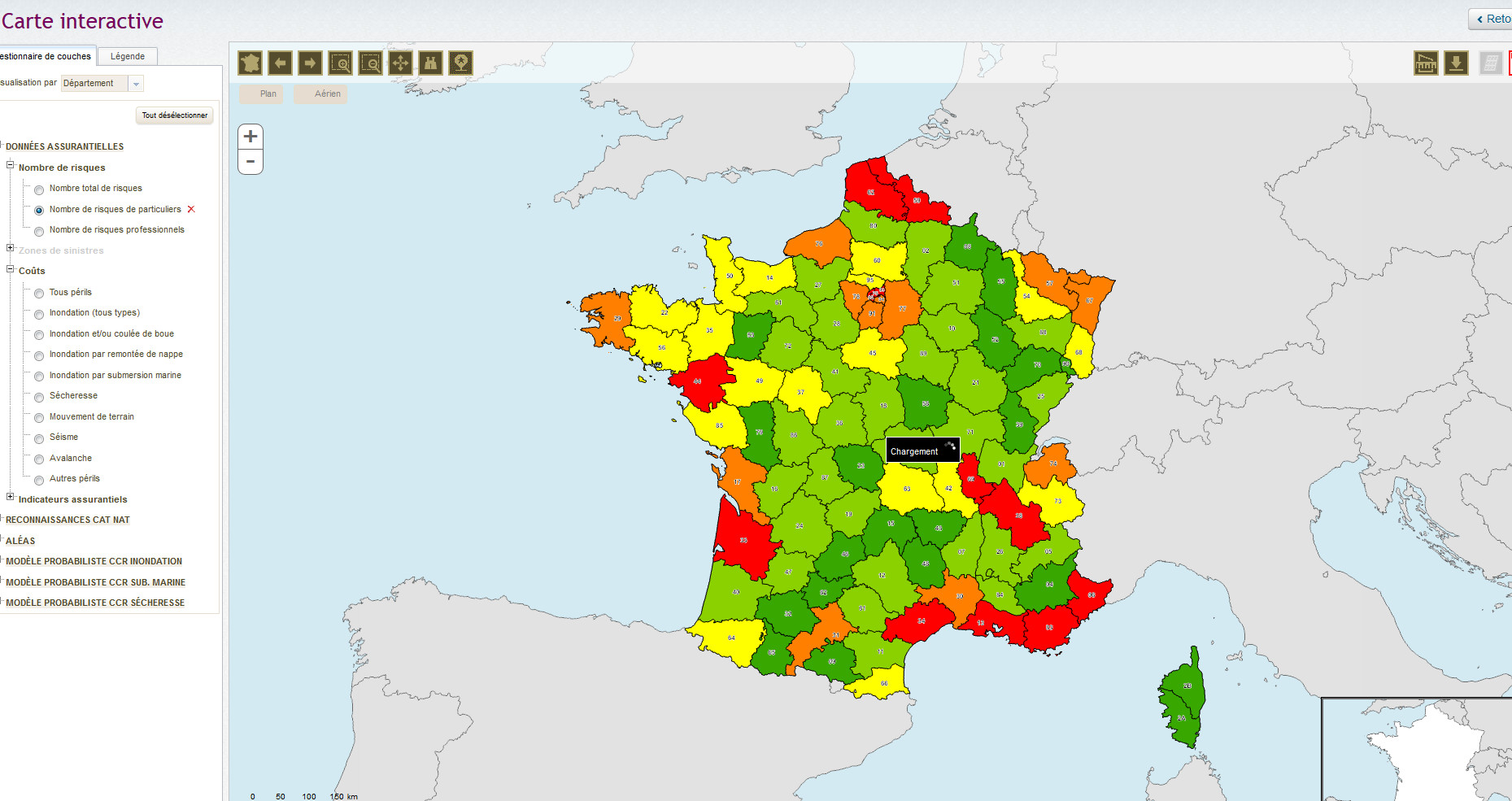
Contributing to prevention
CCR continually contributes to the further development of natural disasters knowledge in France and to the betterment of their prevention. This mission consists of improving experience feedback, not only towards the public authorities but also towards all risk prevention stakeholders. The mission is perfectly aligned with the goals and objectives of the National Observatory for Natural Hazards (Observatoire National des Risques Naturels - ONRN).
The observatory, established at the initiative of the Major Natural Risk Prevention Steering Committee (Conseil d’Orientation pour la Prévention des Risques Naturels Majeurs - COPRNM), works to:
- enhance and capitalize on existing knowledge of the hazards and stakes at risk,
- provide information to the public that facilitates the enhanced development of a risk culture,
- assist in the economic analysis of prevention and crisis management,
- further the development of an assessment and forecast system,
- set up a network of territorial observatories that fosters synergy and experience sharing,
- contribute to risk prevention steering and governance bodies.
Convinced of the critical role it plays of improving knowledge of natural risks, CCR, as a founding member of ONRN, holds a seat on its management board. It actively participates in a variety of current workgroups (development of partnerships, establishment of indicators and specific studies, communication and website management).
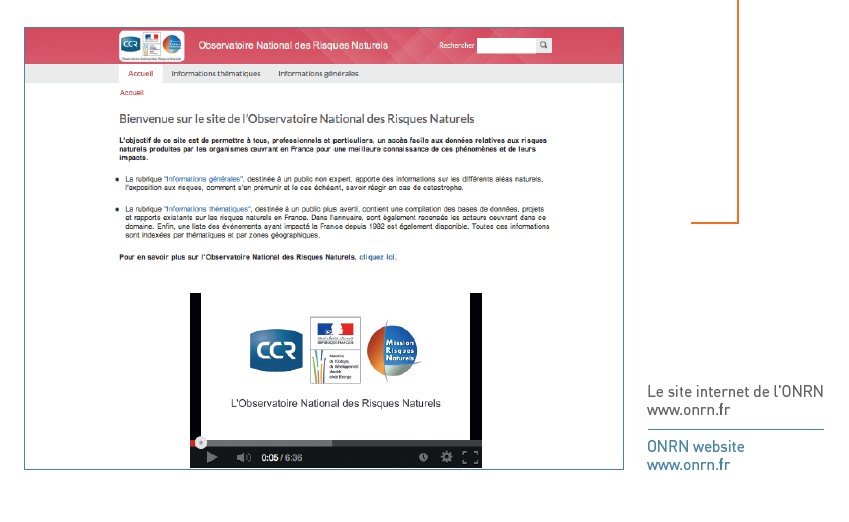
CCR provides ONRN with the following indicators relating to a specific range of perils (flooding, subsidence, earthquakes, landslides):
- number of decrees recognizing a state of natural disaster by municipality,
- aggregate losses by municipality for period 1995 to 2013,
- aggregate losses by highly exposed areas for period 1995 to 2013,
- average loss by municipality for period 1995 to 2013,
- average loss frequency by municipality,
- loss ratio by municipality.
The company has also established specific indicators in the context of the National Flood Risk Management Strategy (Stratégie Nationale de Gestion du Risque Inondation - SNGRI), notably the aggregate flood lossesper inhabitant and per municipality covering the period from 1995 to 2013.
These indicators enable ONRN users to enhance vulnerability assessments and exposure studies. They may also be used to cross-reference other information published by ONRN so as to obtain more detailed knowledge of the risk exposure of French municipalities.
